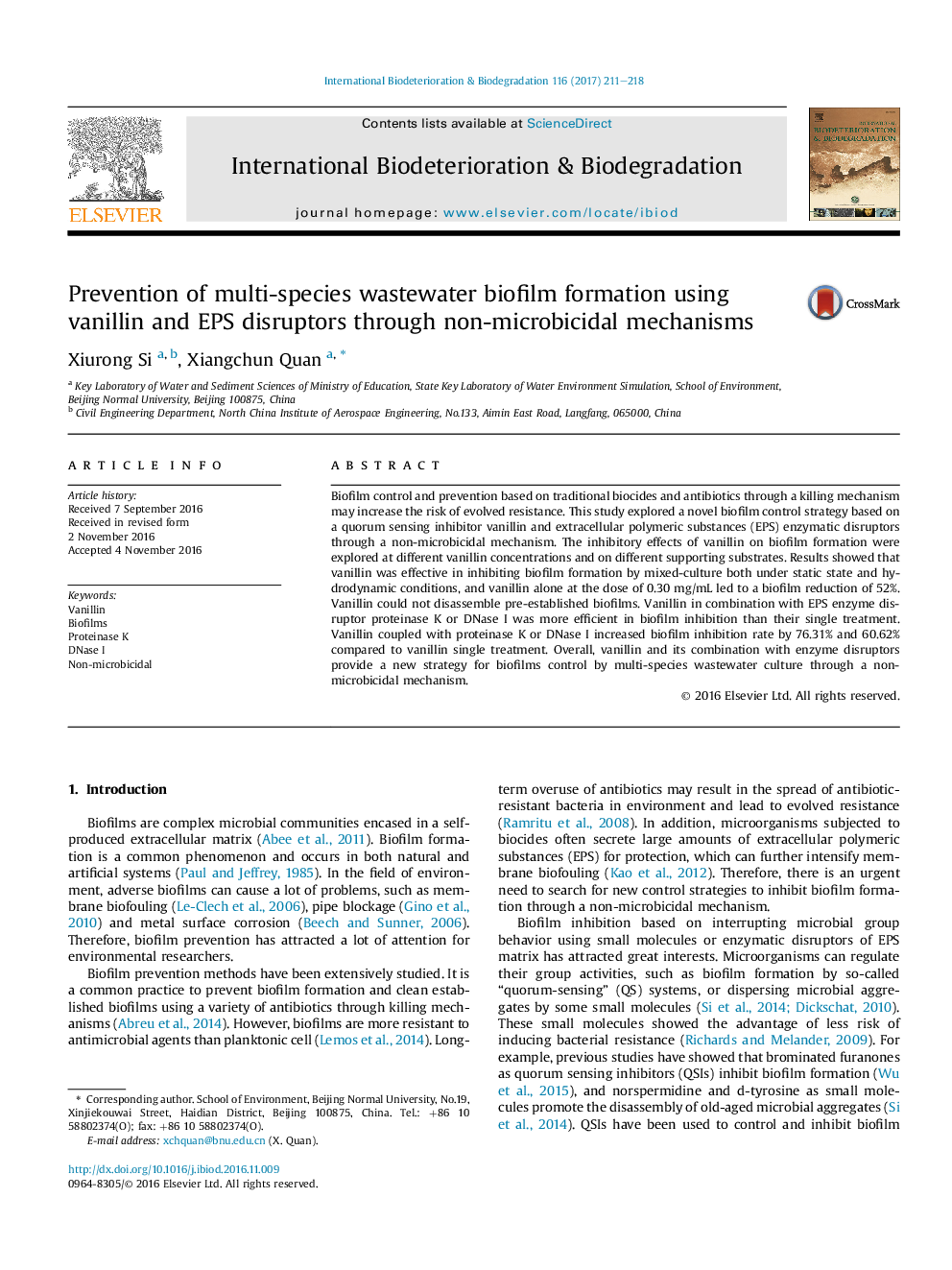| Article ID | Journal | Published Year | Pages | File Type |
|---|---|---|---|---|
| 8844045 | International Biodeterioration & Biodegradation | 2017 | 8 Pages |
Abstract
Biofilm control and prevention based on traditional biocides and antibiotics through a killing mechanism may increase the risk of evolved resistance. This study explored a novel biofilm control strategy based on a quorum sensing inhibitor vanillin and extracellular polymeric substances (EPS) enzymatic disruptors through a non-microbicidal mechanism. The inhibitory effects of vanillin on biofilm formation were explored at different vanillin concentrations and on different supporting substrates. Results showed that vanillin was effective in inhibiting biofilm formation by mixed-culture both under static state and hydrodynamic conditions, and vanillin alone at the dose of 0.30Â mg/mL led to a biofilm reduction of 52%. Vanillin could not disassemble pre-established biofilms. Vanillin in combination with EPS enzyme disruptor proteinase K or DNase I was more efficient in biofilm inhibition than their single treatment. Vanillin coupled with proteinase K or DNase I increased biofilm inhibition rate by 76.31% and 60.62% compared to vanillin single treatment. Overall, vanillin and its combination with enzyme disruptors provide a new strategy for biofilms control by multi-species wastewater culture through a non-microbicidal mechanism.
Keywords
Related Topics
Life Sciences
Environmental Science
Environmental Science (General)
Authors
Xiurong Si, Xiangchun Quan,
